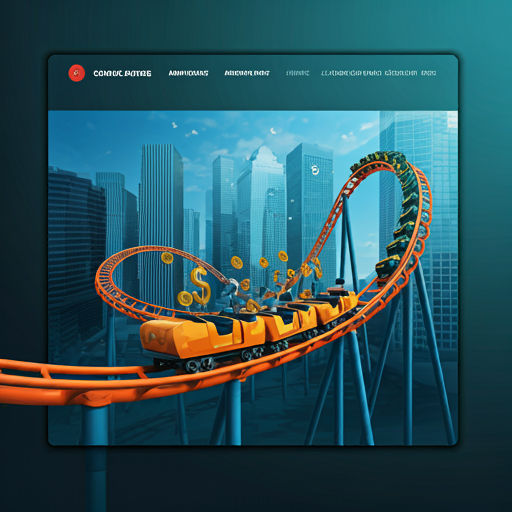Navigating the Stock Market Rollercoaster: Tips for Investors
What Causes Market Fluctuations?
Market fluctuations are primarily driven by supply and demand dynamics. When investors perceive potential gains, they buy aggressively, pushing prices higher. Conversely, negative news can trigger panic selling, leading to sharp declines. This volatility often reflects broader economic indicators, such as interest rates and inflation. Understanding these factors is crucial. Knowledge is power in investing. Additionally, geopolitical events can create uncertainty, further impacting market sentiment. Investors must stay informed.
The Impact of Economic Indicators
Economic indicators significantly influence market trends. They provide insights into economic health. Investors closely monitor metrics like GDP and unemployment rates. These figures can sway market sentiment. Awareness is essential for strategic decisions. Knowledge leads to better outcomes. Additionally, inflation rates can affect purchasing power. Understanding this is vital for investors.
Investment Strategies for Uncertain Times
Diversification: Spreading Your Risk
Diversification is a critical risk management strategy. It involves spreading investments across various asset classes. This approach mitigates potential losses from any single investment. A balanced portfolio is essential. Investors should consider different sectors and geographies. Variety enhances stability in uncertain markets. Knowledge is key to effective diversification.
Long-Term vs. Short-Term Investing
Long-term investing typically yields higher returns. It allows for compounding growth over time. Investors can weather market volatility more effectively. Patience is crucial in this strategy. In contrast, short-term investing focuses on quick gains. This approach requires constant market monitoring. It can be riskier due to price fluctuations. Awareness of market trends is essential.
Technical Analysis: Reading the Market
Key Indicators to Watch
Key indicators in technical analysis include moving averages and relative strength index (RSI). These metrics help identify trends and potential reversals. By analyzing price patterns, investors can make informed decisions. Understanding these indicators is essential for effective trading. Additionally, volume analysis provides insights into market strength. Increased volume often confirms price movements. Awareness of these factors enhances trading strategies.
Chart Patterns and Trends
Chart patterns, such as head and shoulders or triangles, indicate potential market movements. These formations help traders anticipate price changes. Recognizing these patterns is crucial for effective decision-making. A well-timed entry can maximize profits. Additionally, trends, whether upward or downward, provide context for trading strategies. Understanding market direction is essential. Knowledge of these elements enhances trading success.
Fundamental Analysis: The Bigger Picture
Evaluating Company Performance
Evaluating company performance involves analyzing financial statements and key ratios. This assessment reveals the company’s profitability and efficiency. Investors should focus on metrics like earnings per share and return on equity. These figures provide insight into financial health. Additionally, understanding market position and competitive advantages is essential. Knowledge is power in investment decisions. A comprehensive analysis leads to informed choices.
Understanding Market Sentiment
Understanding market sentiment is crucial for investors. It reflects the overall attitude of market participants. Positive sentiment often drives prices higher, while negative sentiment can lead to declines. Investors should monitor news, social media, and economic reports. These sources provide insights into public perception. Awareness of sentiment can enhance decision-making. Knowledge is key in navigating market fluctuations.
Risk Management Techniques
Setting Stop-Loss Orders
Setting stop-loss orders is a vital peril management technique. These orders automatically sell a security when it reaches a predetermined price. This strategy helps limit potential losses in volatile markets. Investors should determine their risk tolerance beforehand. A well-placed stop-loss can protect capital effectively. Awareness of market conditions is essential. Knowledge of this tool enhances trading discipline.
Position Sizing Strategies
Position sizing strategies are essential for effective risk management. They determine the amount of capital allocated to each trade. By assessing risk per trade, investors can protect their portfolios. A common method is the fixed percentage approach. This involves risking a set percentage of total capital. Consistency is key in this strategy. Understanding personal risk tolerance is crucial. Knowledge of position sizing enhances overall trading performance.
The Role of Emotions in Investing
Recognizing Emotional Triggers
Recognizing emotional triggers is vital for successful investing. Common triggers include fear, greed, and overconfidence. These emotions can lead to impulsive decisions. For example:
Understanding these triggers helps investors maintain discipline. Awareness is crucial for sound decision-making. Knowledge of emotions enhances investment strategies.
Strategies to Maintain Discipline
Strategies to maintain discipline are essential for investors. Establishing a clear trading plan helps mitigate emotional decisions. Adhering to predetermined entry and exit points is crucial. This approach reduces impulsive reactions to market fluctuations. Additionally, regular performance reviews can enhance accountability. Tracking progress fosters a disciplined mindset. Consistency is key in successful investing. Knowledge of personal triggers aids in maintaining focus.
Staying Informed: Resources for Investors
Utilizing Financial News Outlets
Utilizing financial news outlets is crucial for investors. These sources provide timely information on market trends. Key outlets include:
Regularly following these platforms enhances market awareness. Staying informed aids in making strategic decisions. Accurate information is essential for success.
Engaging with Online Investment Communities
Engaging with online investment communities enhances knowledge and networking. These platforms allow investors to share insights and strategies. Popular communities include Reddit and StockTwits. Active participation fosters learning and collaboration. Members can gain diverse perspectives on market trends. Knowledge is essential for informed decisions. Community support can boost confidence.
Conclusion: Embracing the Journey
Reflecting on Your Investment Goals
Reflecting on investment goals is essential for success. Regular assessments help align strategies with objectives. Investors should consider risk tolerance and time horizon. This clarity enhances decision-making. Adjustments may be necessary as markets evolve. Awarenecs is key to staying on track . Continuous reflection fosters growth and learning.
Preparing for Future Market Changes
Preparing for future market changes requires proactive strategies. Investors should stay informed about economic indicators. This knowledge helps anticipate potential shifts. Diversifying portfolios can mitigate risks effectively. A well-rounded approach enhances resilience. Awareness of market trends is crucial. Continuous education fosters adaptability in uncertain environments.
